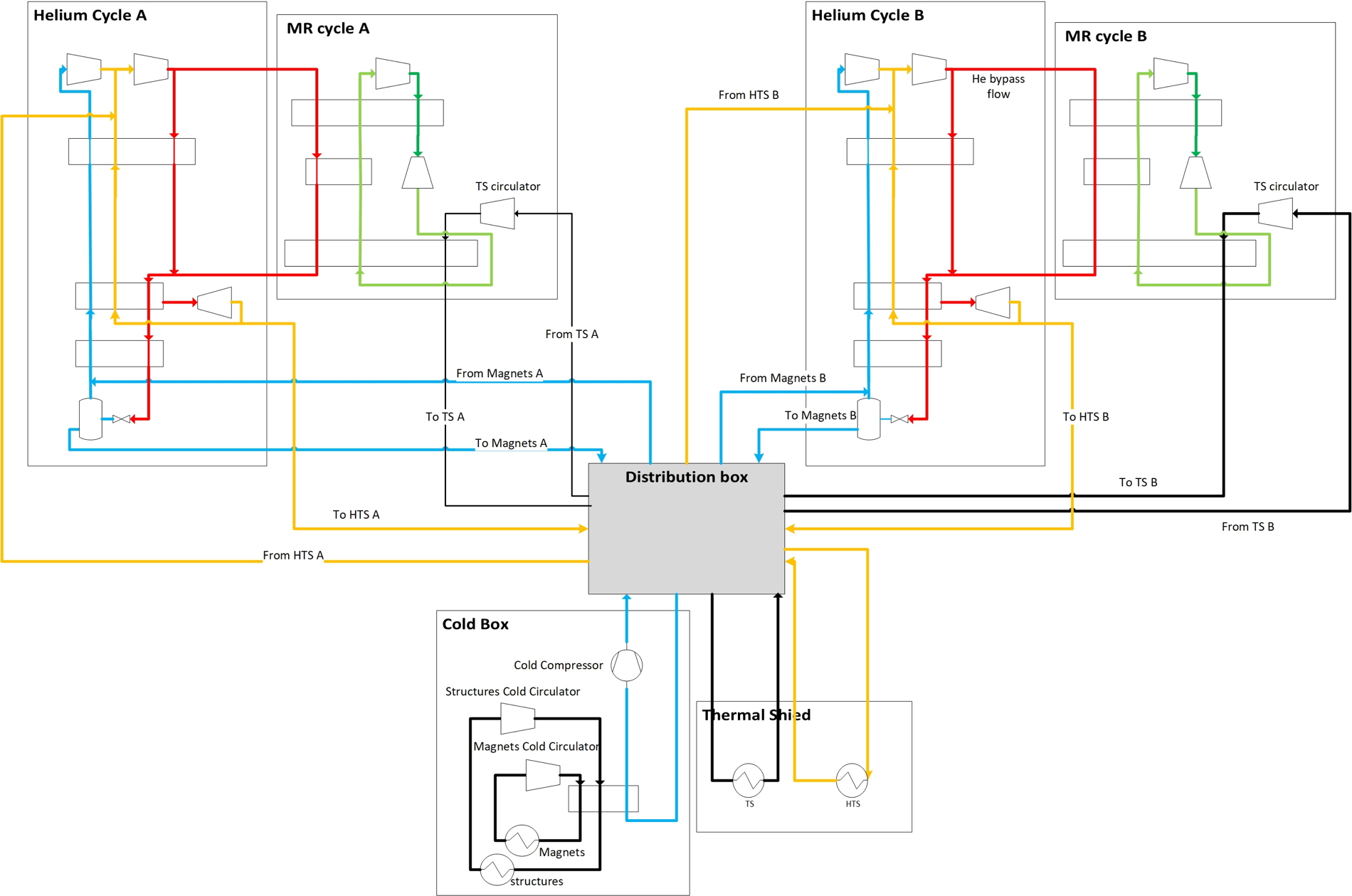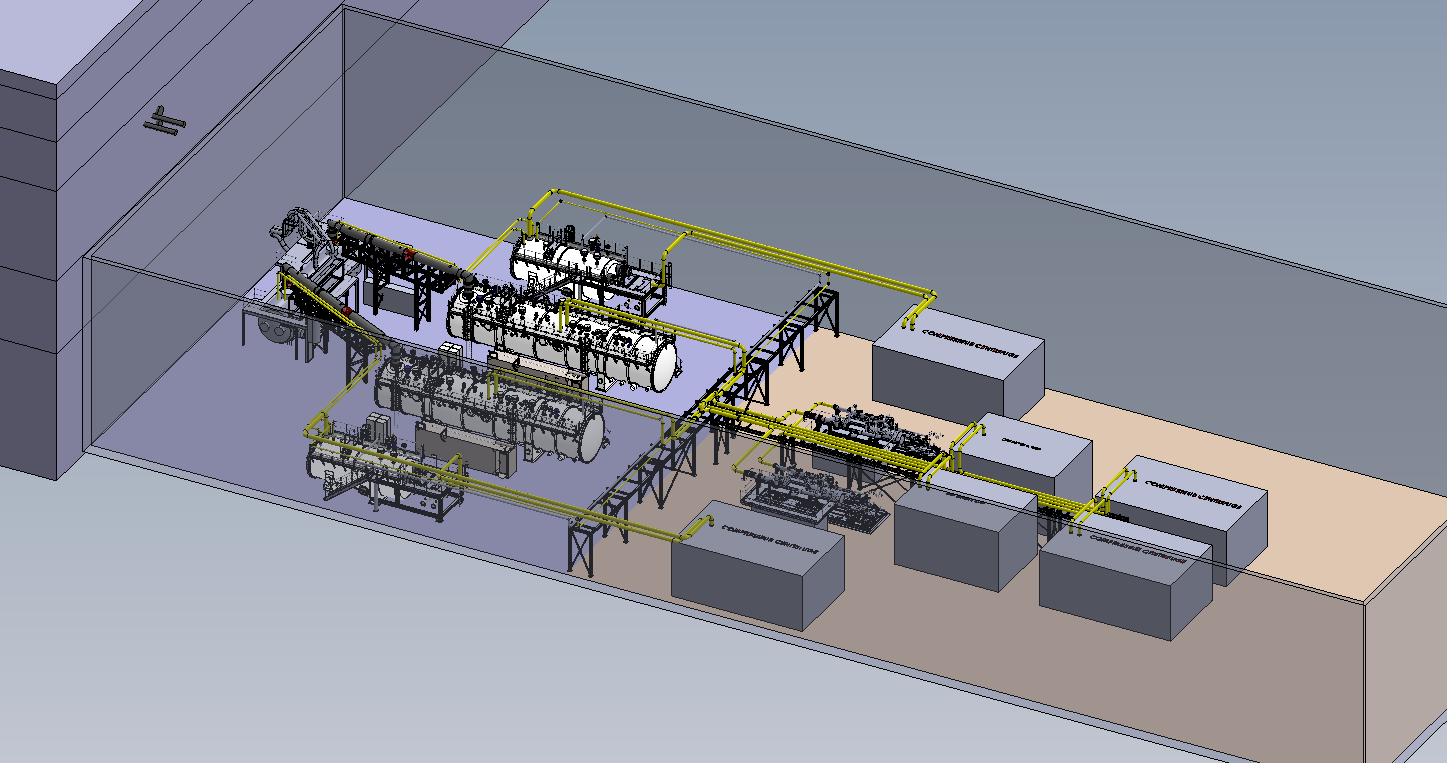Speaker
Description
CEA has been involved for seven years (2014-2020) in the pre-conceptual design study of the magnet systems EU DEMO [1, 2] and for 2 years (2018-2020) in the industrial exploratory study for the cryogenic system and cryo-distribution for EU DEMO. In the framework of these Eurofusion workpackages, significant engineering and technological results have come out from the studies and they have paved the way towards the conceptual design of the cryogenic users and the associated cooling system for the EU DEMO future tokamak reactor (2021-2027).
The design of the cooling systems for the superconducting magnets at about 4 K, the High Temperature Superconducting Current Leads at 50 K and the thermal shields at about 80 K, has been investigated whereas the cooling parameters are not yet fixed at this stage of pre-conceptual design. It allows some iteration loops and discussions for optimal cooling parameters at the interfaces (temperature, pressure, mass flows, heat loads) [3]. This design methodology, which has been conducted before for previous cryogenic systems (K-STAR, JT-60SA, ITER), is an innovative engineering challenge in close collaboration with the cryogenic user designers, the cryogenics specialists and the industry. Indeed, it allows designing an optimal overall cooling system for the superconducting magnets and the thermal shields. The optimization relies mainly on minimization of the refrigeration loads with respect to acceptable cooling requirements, hence optimization of the general layout (volume and mass of the equipment), leading to significant reductions of investment and operation costs. Moreover, the implication of the industry at the early stage of the pre-conceptual design has shown to be relevant and has brought some fruitful insights for the future EU DEMO cryogenic system and cryo-distribution in terms of engineering aspects and R&D developments.
The specifications of the future cryogenic system and cryo-distribution for EU DEMO have led to the study and the comparison of several process options in order to meet the cooling requirements. The estimation of the overall refrigeration loads for EU DEMO cryogenics users is around 100 kW equivalent at 4.5 K, with a large contribution of the 80 K loads for the thermal shields (48% of the total cryogenic user loads in case the vacuum vessel is at 373 K, or 64% at 473 K for a continuous baking option). This interactive work between designers and industry enables to explore potential ways to reduce the total refrigeration loads, by enlarging the cooling parameter ranges and by studying the impact on the cryogenic users.
Integrated modelling tools [4] (thermal hydraulic, cryogenics, thermal-mechanics, electromagnetic) and iterative calculations were developed to address and to assess the cooling requirements.
Trade off process studies and estimations on the expected performance of the cryogenic equipment such as compressors, circulators and turbines are very useful to identify the critical issues related to the cooling requirements for the nominal operation, but also for the off design modes (cool down and turndown operation with reduced refrigeration loads). The technical gaps and the requested R&D developments are highlighted. Their identifications allow the industry to address them in the near future to be able to supply a suitable cryogenic system and cryogenic distribution for EU DEMO tokamak reactor.
Finally, one of the main result of the industrial study was the general layout of the cryogenic system and its distribution, relying on the baseline solution with the helium and the mixed gas refrigeration processes (Fig.1). The choice of studying this process is a reasonable innovative approach, in favor of potential gain in terms of efficiency of about 5% compared to conventional helium process for large cryoplants. The resulting general layout of this process is of primary importance for engineering aspects and integration plant for EU DEMO reactor. Fig. 2 shows the preliminary layout of the cryogenic building, with the distribution box, the Helium cycles and Mixed gas Refrigeration cycles with 2 units each for redundancy. Safety aspects related to a fusion nuclear reactor are addressed and their impacts on the design are analyzed.
Acknowledgment
This work has been carried out within the framework of the EUROfusion Consortium for the EU-DEMO work package WPPMI. The views and opinions expressed herein do not necessarily reflect those of the European Commission.


| Affiliation | Univ. Grenoble Alpes, CEA IRIG-DSBT |
|---|---|
| Country or International Organization | France |
